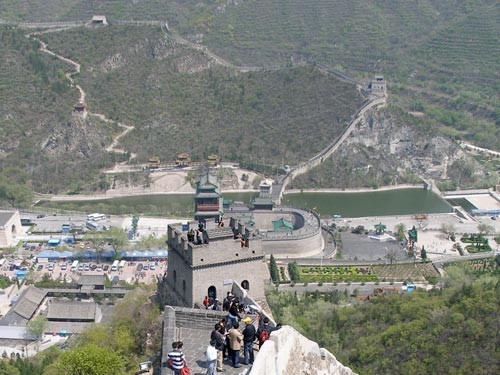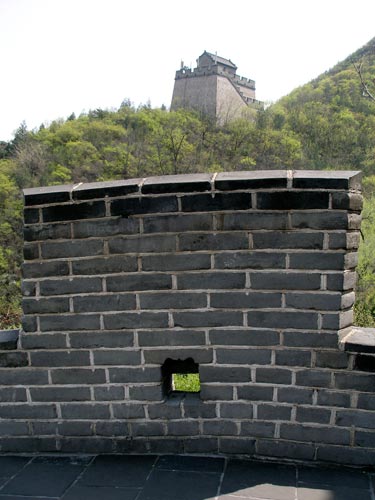The Great Wall is called Wan Li Chang Cheng (or The Long Wall of 10,000 Li). The li is a traditional Chinese unit of distance, reputed to have been established by the Yellow Emperor at the founding of Chinese civilization around 2,600 BC. It was standardized by Yu the Great of the Xia Dynasty 600 years later. Although the value has varied considerably over time, it now has a standardized length of half a kilometer (around 1/3 mile).
When the Great Wall was reconstructed during the Qin, Han and Ming Dynasties, its length actually exceeded 10,000 li. It currently stretches approximately 5,500 miles, although some of its sections are now in ruins or even entirely disappeared.
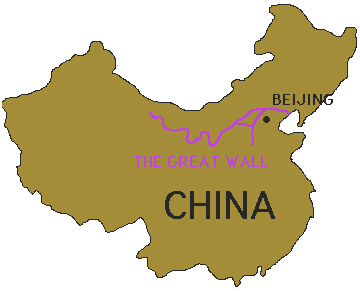
The wall actually began as a series of stone and earthen fortifications built 2,200 years ago by several small kingdoms along the Yellow River. It was meant to protect the northern borders from raids and attacks by nomadic tribes.
These wall were first united under China's first emperor, Qin Shi Huang (221 - 206 BC). Very little of that wall remains today. It lay farther north than the current wall, which was built during the Ming Dynasty.
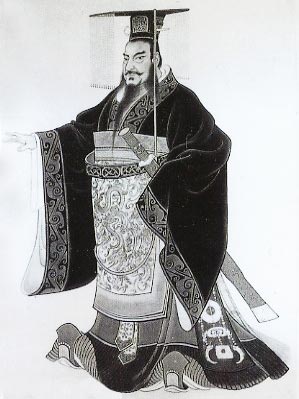
Qin (dynasty name) Shi (first) Huang (emperor)
Qin Shi Huang (or Ying Zheng) was king of the Chinese State of Qin from 246 to 221 BC during the Warring States Period. He became the first emperor of a unified China in 221 BC. and ruled until his death in 210 BC at the age of 50. The Qin state got its name from his surname, Ying, which eventually evolved into Qin.
Qin Shi Huang remains a controversial figure in Chinese history. One one hand, he passed a series of major economic and political reforms, and undertook gigantic projects including the first version of the Great Wall of China, a giant mausoleum guarded by a life-sized terracotta army, and a massive national road system. Unforutnately he did this all the expense of a great many lives. Furthermore, to ensure stability, he outlawed Confucianism, banned and burned books, and buried many scholars alive.
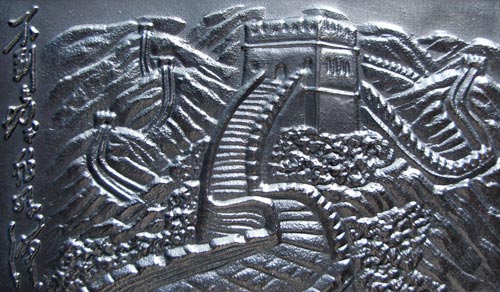
The Great Wall concept was revived again during the Ming Dynasty (1368 - 1644). Unlike the earlier Qin fortifications, the Ming construction was stronger and more elaborate due to the use of bricks and stone instead of rammed earth. Sections near their capital of Beijing were especially strong. At its peak, the Ming Wall was guarded by more than one million men.
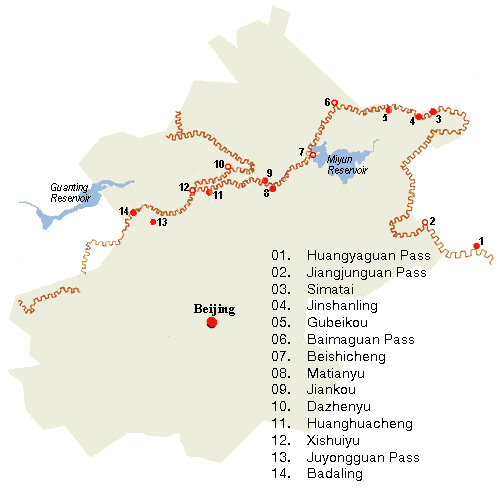
There are currently about 20 sections of the wall that are safe to be visited. We went to JuYongGuan or Juyong Pass. The pass is located in the middle of an 11-mile valley named GuanGou, which is created by the Jundu Mountains and the ending of the Taihang Mountains. The northern end of the valley is guarded by the Badaling section of the wall, and the southern end is known as Nan Pass.
The pass has long been a military stronghold. As early as the Spring & Autumn Period (770 - 476 BC), the Yan State built fortifications here. This section was linked to the Great Wall during the Southern & Northern Dynasties (420 - 588). The current structures were built during the Ming Dynasty. Reconstruction work was neglected in the Qing Dynasty, but in 1992 and 2000, the pass was renovated.
Approaching the wall

Traffic jams are common as giant tour busses squeeze through the tiny village streets.

A glimpse of the wall in the distance. The hillsides are terraced for trees and grass to prevent erosion.
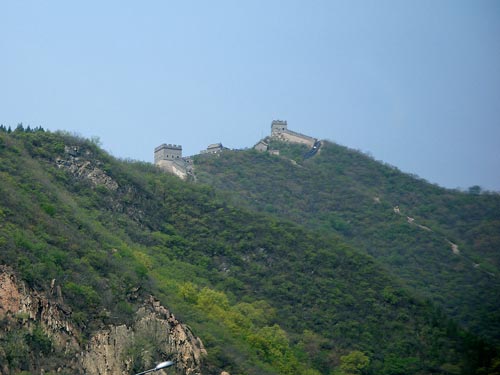
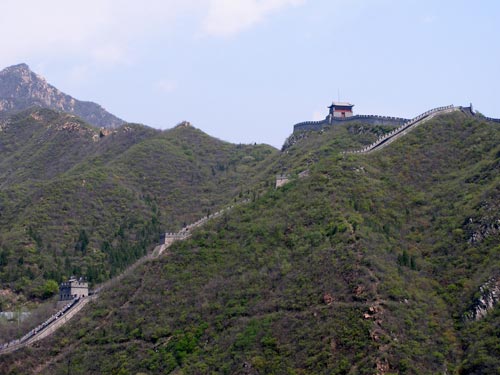
Popular beliefs claiming that the Great Wall is visible to the unaided eye from the moon is like viewing a human hair from 2 miles away. The wall (which is a maximum of 30 feet wide) would have to be 70 miles wide in order for this to be true. Perhaps from low orbit (of as little as a 100 miles), it might be visible... under nearly perfect viewing conditions, with better than normal vision, and if one knows exactly where to look.
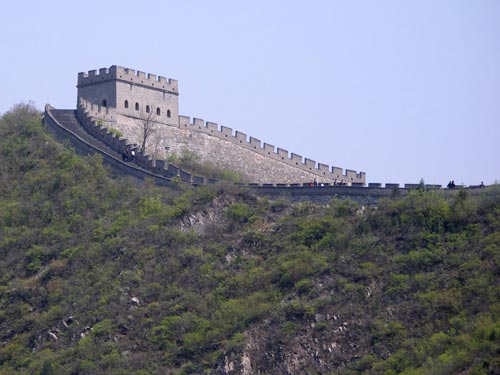
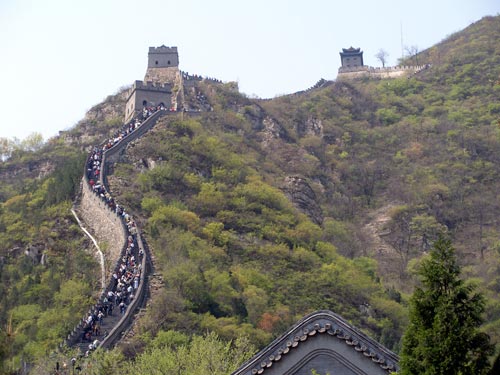
A thick flow of tourists
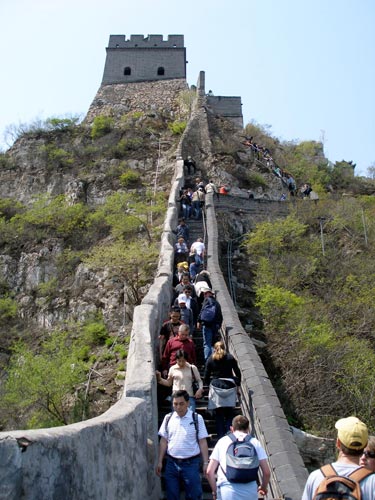
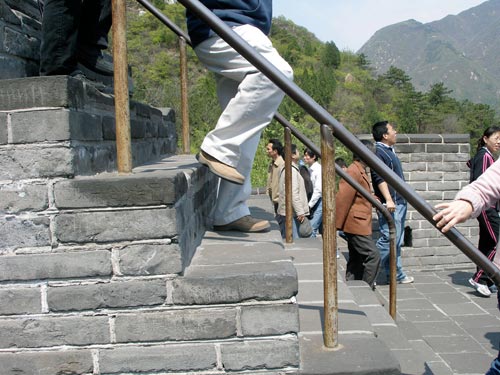
The stairs are steep and uneven.
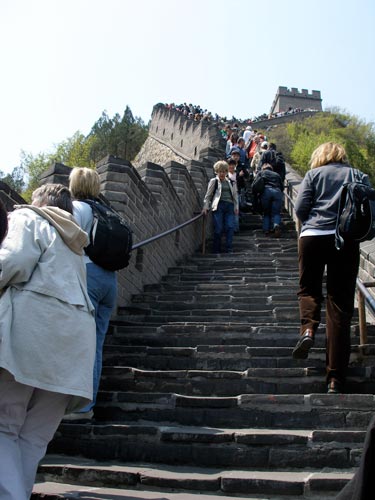
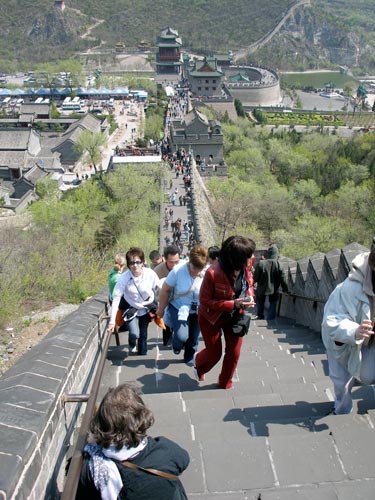
A look back down. The giant pass gate can be seen at the bottom.
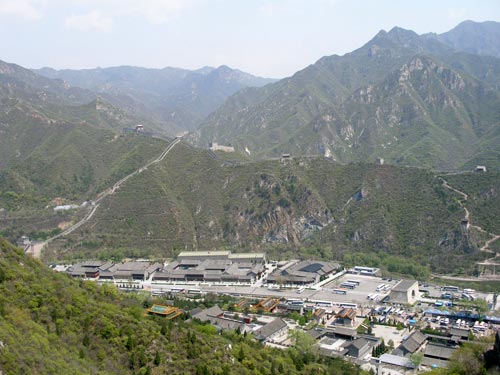
Overlooking GuanGou Valley
The existing pass town was built in 1368 by General Xu Da and Deputy General Chang Yuchun. It was repeatedly improved. The town is complete with military installations, towers, official residences, temples and a Confucian school.
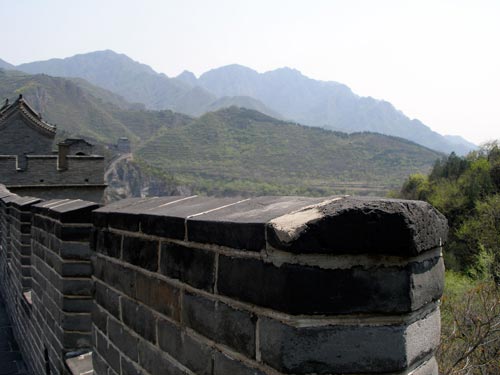
Originally, the Great Wall was mainly built from dirt, stones and wood. During the Ming Dynasty, however, bricks were heavily used. The size and weight of the bricks made them easier to work with than earth and stone, so construction quickened. Additionally, bricks could bear more weight and endure better than rammed earth. Stone can hold weight better than brick, but is more difficult to use. Consequently, stones cut in rectangular shapes were used for the foundation, inner and outer brims, and gateways of the wall.
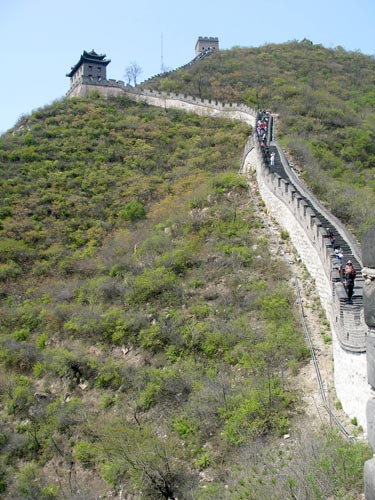
The square towers give the wall its famous image.
Two-storied watchtowers were designed for observing enemy movements. The lower floor was used for storing grain, military equipment and gunpowder as well as for quartering soldiers.
Beacon or signal towers are the oldest and most effective original telegram. Communication between the army units along the length of the wall was of high importance, including the ability to call reinforcements and warn garrisons of enemy movements. Built within sight of each other, the towers were used to relay military messages using smoke in the daytime and a fire at night. A signal could be sent to the capital from distant places within an hour or two.
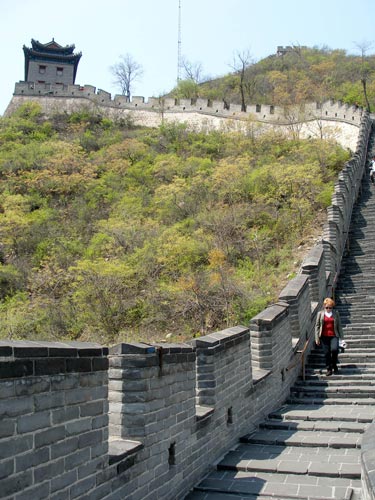
The higher one goes, the less tourists there are.
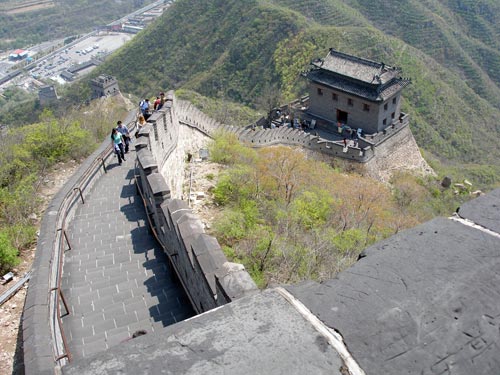
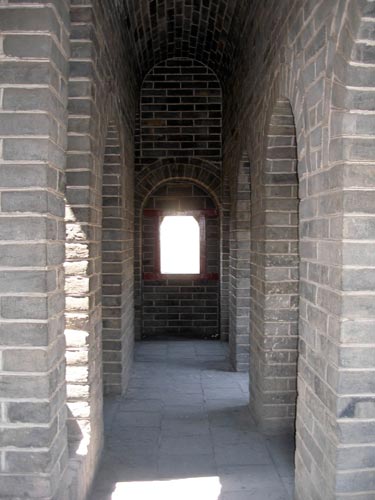
Inside the first floor of a tower

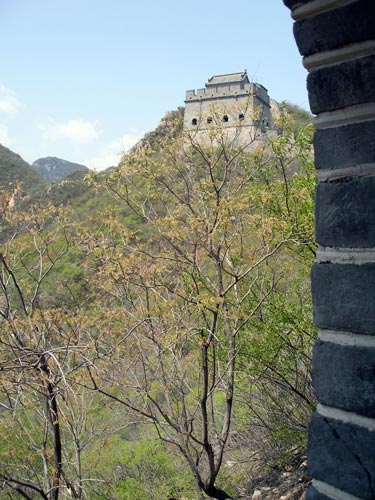
The more threatened an area was, the closer together the towers were. More importantly, their distribution showed the effective range of the arrow of the day.
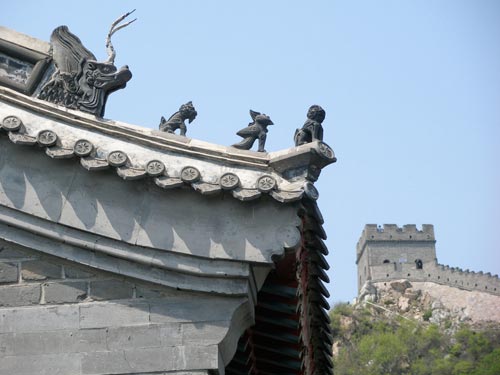
Considered an official building of the empire, the wall was allowed to display imperial roof decorations.

It has been estimated that somewhere between 2 to 3 million Chinese died as part of the centuries-long project of building the wall.
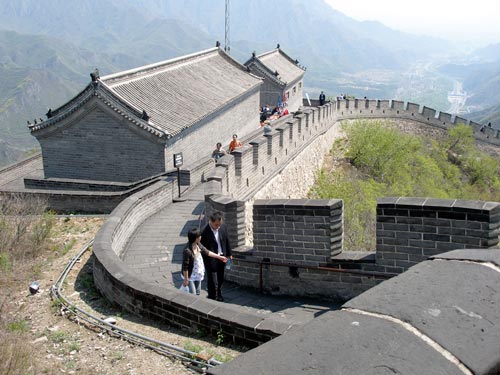
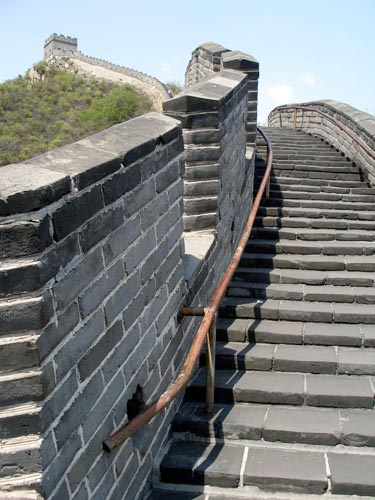
Battlements line the uppermost portion of a vast majority of the wall, with defensive gaps a little over one foot tall and about 9 inches wide.
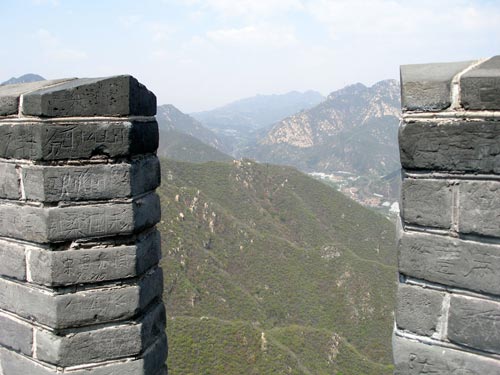
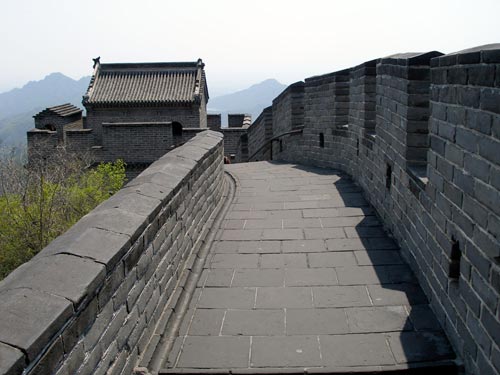

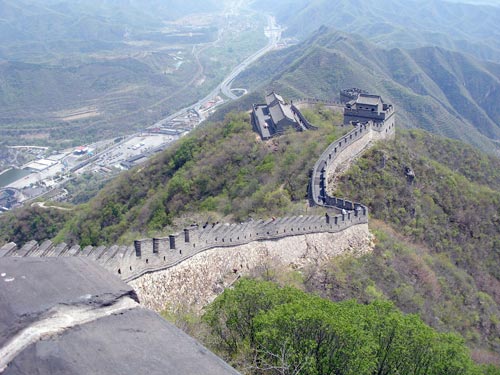
At this point, the wall stops going up the mountain and turns to go back down across the valley again.

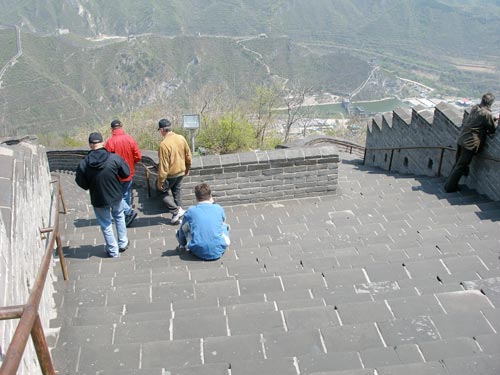
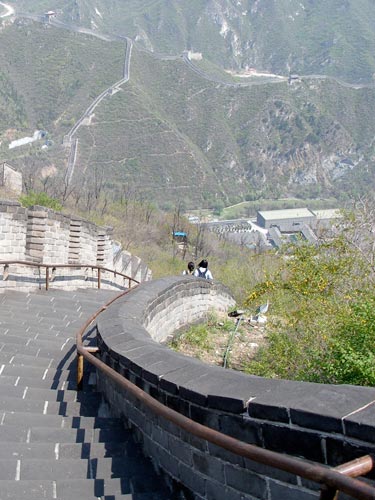
The wall can be seen going back up the mountain on the other side of the valley.
There wasn't enough time to complete the entire loop that this section of the wall made, so we had to go back the same way we came.
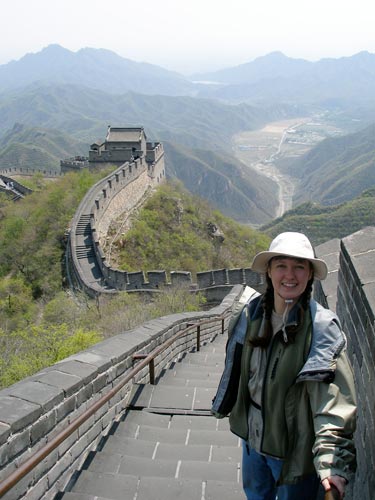
My proud moment on the wall
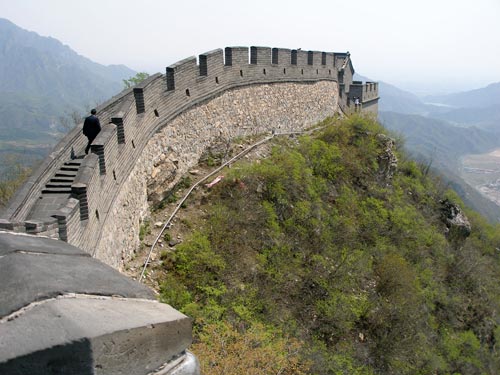
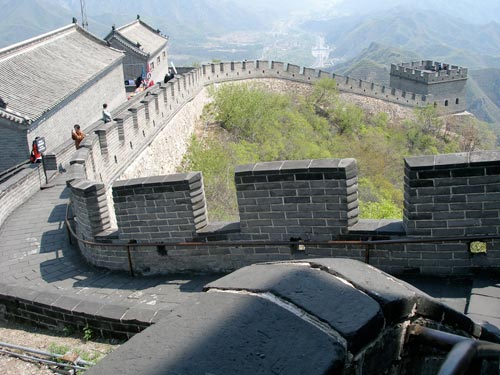
The wall follows the contour of mountain.
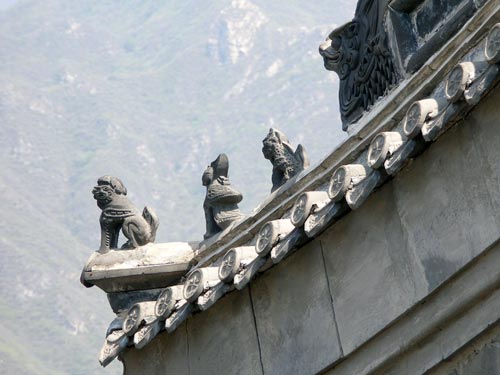
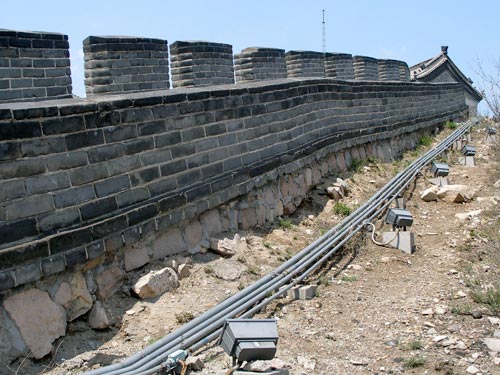
The wall isn't very tall in some spots.
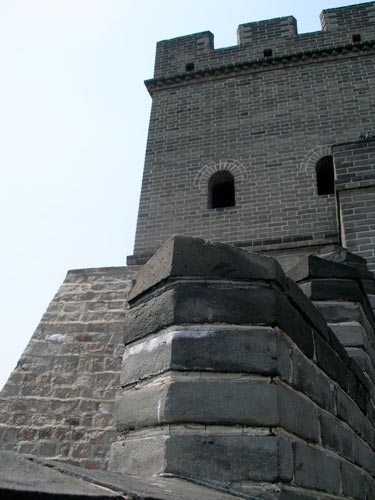
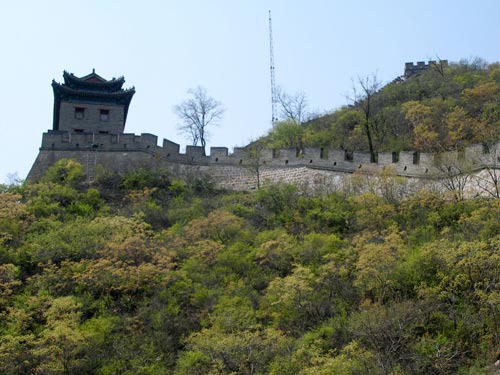
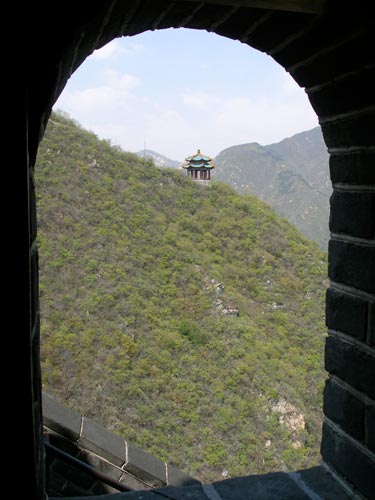
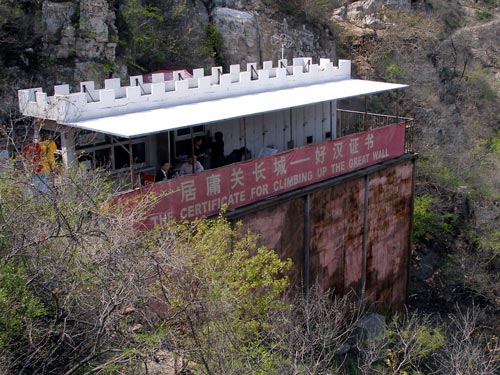
A quick stop at a souvenir stand for proof that...
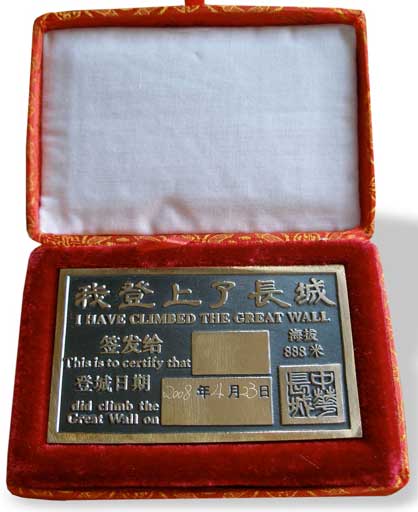
...I climbed the wall!
